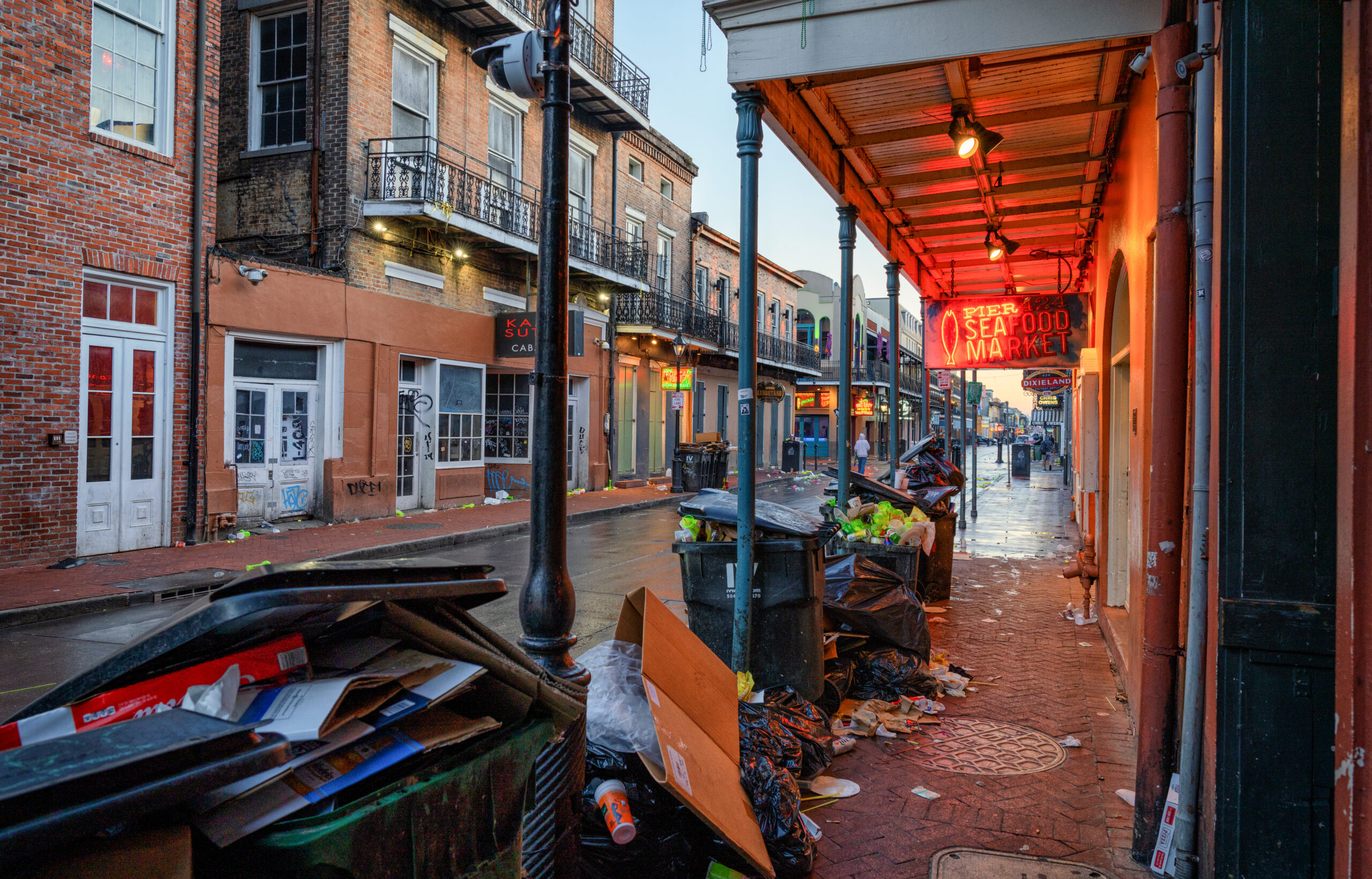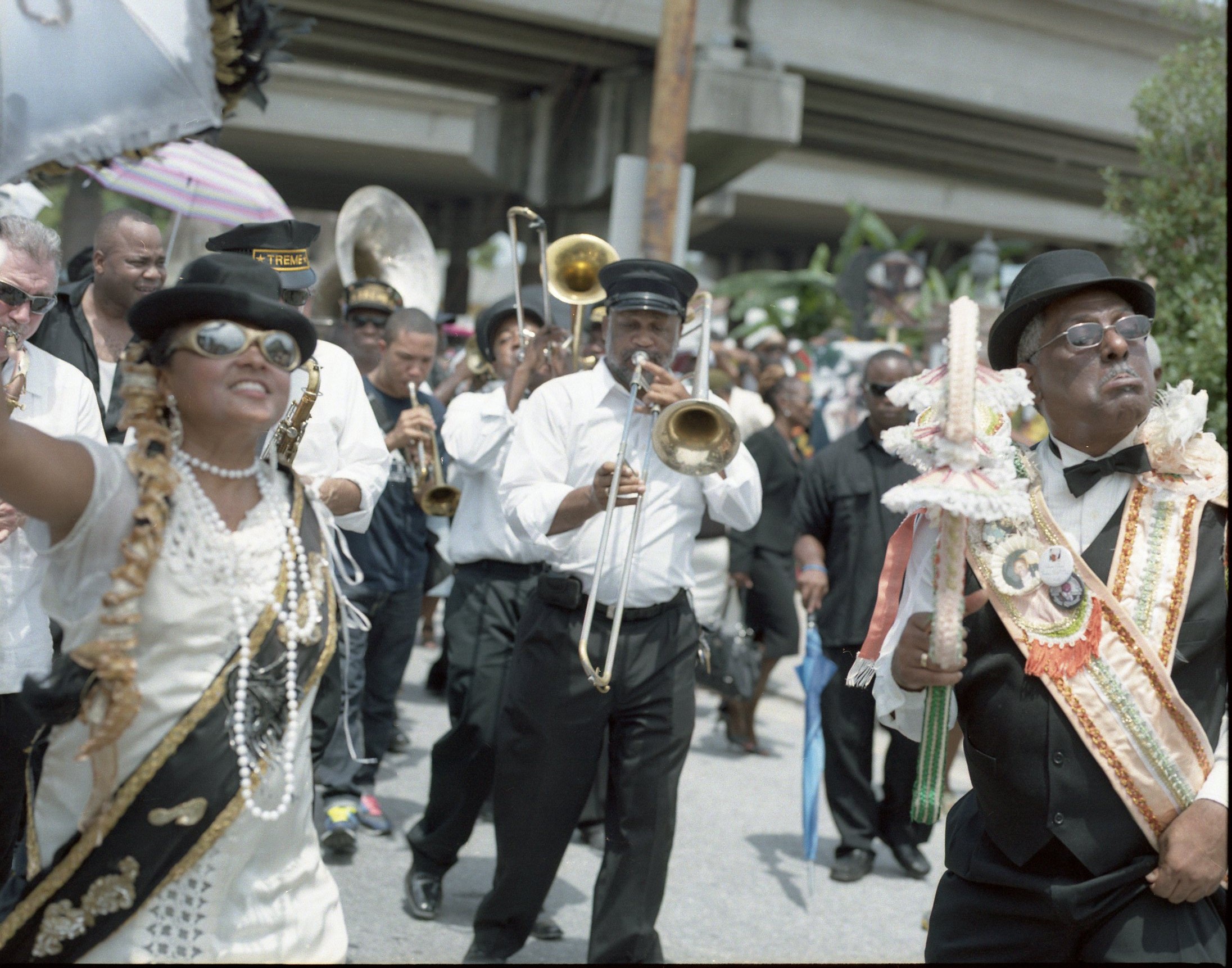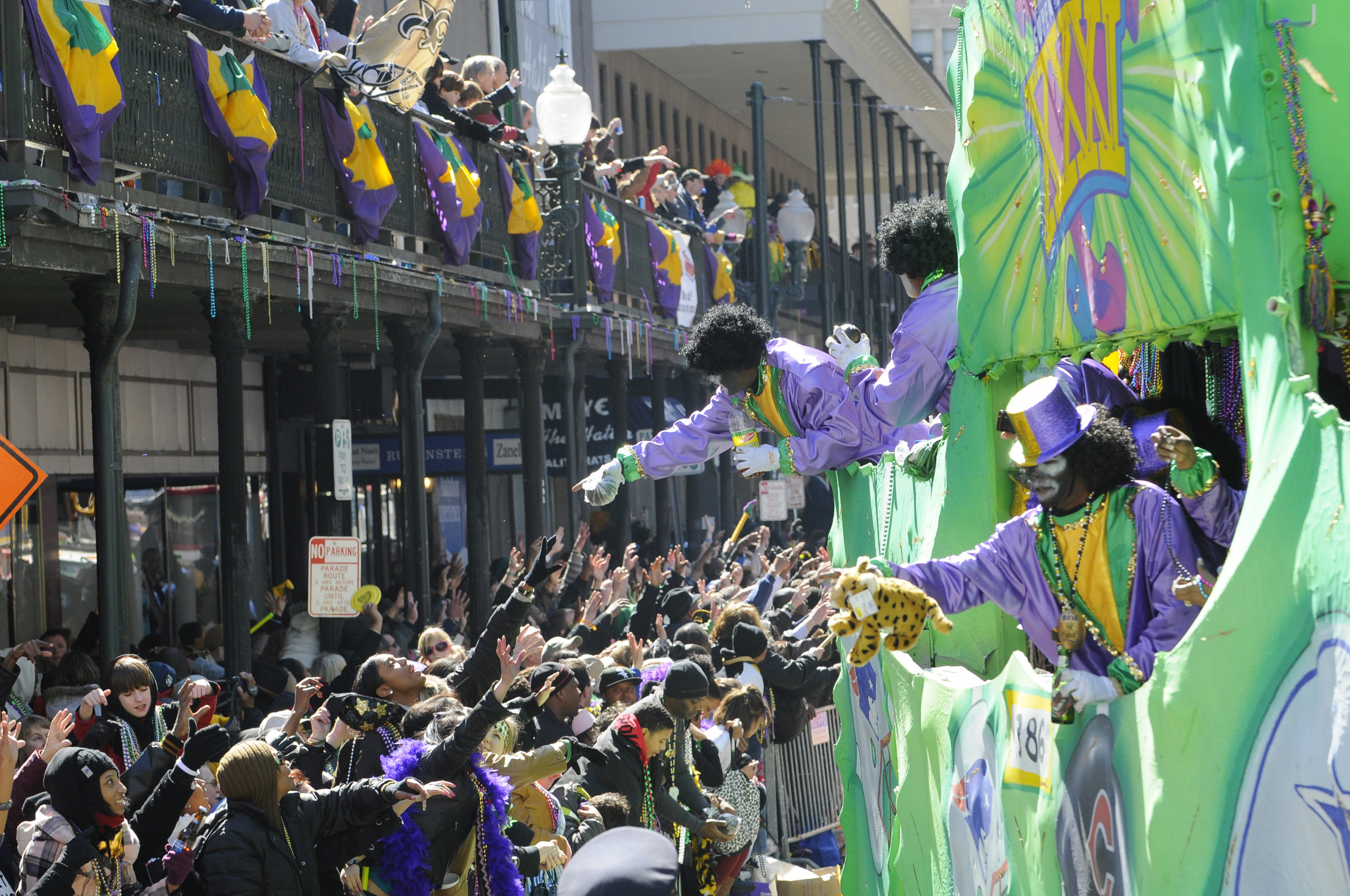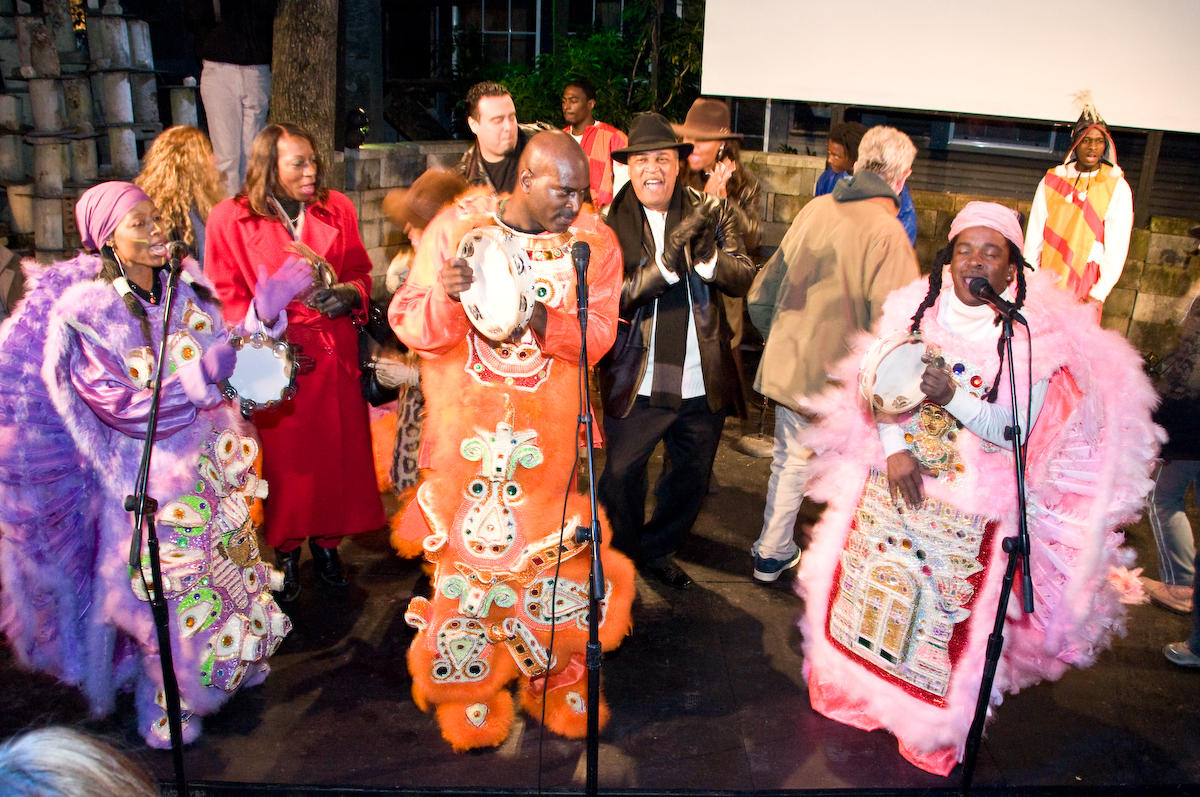Dear New Orleans City Council,
The past year has been undeniably detrimental to the city of New Orleans between the nearly 30 thousand cases and hundreds of deaths from COVID-19 and the financial blow that the city’s all-important tourism industry has taken. In 2019, tourists spent over $10 billion in Crescent City, and it is estimated that $150 million is lost a week in 2020 for a yearly loss of $7.8 billion. Events synonymous with New Orleans and its culture like Mardi Gras, which generates $1 billion alone, were canceled for the first time in decades, and famously busy streets like Bourbon Street have been empty.

Trash along Bourbon Street in New Orleans, Louisiana, early on a Sunday morning.
The 130 annual festivals in New Orleans that were canceled in 2020 will begin returning this fall, and the tourists will eventually return. The New Orleans Tourism & Cultural Fund should conduct a tourism campaign to bring people back to visit the city. New Orleans culture would be promoted through vibrant, fun, and happy people and events. A successful campaign like the One Time in New Orleans campaign for the tricentennial consists of images associated with New Orleans such as Bourbon Street, food, music, beads, Mardi Gras Indians, and Second lines.
Second lines have been a part of New Orleans culture since the mid to late 19th century through for-hire second lines for weddings and their presence in Mardi Gras and other parades. They are often used to advertise the association of fun in New Orleans in tourism campaigns like One Time in New Orleans. Second lines are a cumulation of New Orleans’ historical foundations of African diasporic and Haitian religions, Voodoo, and resistance from segregation to create the music and dance traditions associated with New Orleans culture today.
Second-line culture consists of jazz funerals, another frequently used image in tourism marketing. These celebrations of life synthesize the different musical and religious traditions of New Orleans through music and dance to help people to heal, turning a tragedy into a community event to move forward. Centuries of religious tradition and perseverance have manifested in the ceremony in the streets of the Crescent City as seen through traditional Mardi Gras Indian costumes.

Funeral of Collins “Coach” Lewis, a renowned designer of Mardi Gras Indian costumes on August 20th, 2011. (Photo by GB)
The city is reopening, albeit with restrictions and modifications. According to the NOLA Ready website, nearly all activities are able to resume in some capacity. Only three activities are deemed “Not Allowed”: block parties, second lines and parades, and dance clubs. These activities are so important to New Orleans, and the city loves to advertise them, but they are not given the chance to operate in any capacity. The absence of second lines is hurting the culture and traditions for people already losing loved ones.
One of the most common associations with second lines is French Quarter weddings. If a happy couple wants a second line to accompany their ceremony, they are going to have to pay up. They would have to pay around $584 for police escort and permits, an average of $1,000 for the brass band, plus more for custom parasols and handkerchiefs. Despite the high cost of these weddings, brass band members likely receive under $200 of that cost despite being the most visible.
In addition to the bands playing in second lines for tourists, the New Orleans Tourism & Cultural Fund needs to support the groups putting on the second lines that we know and love. These groups are often social aid and pleasure clubs that people pay dues to to organize jazz funerals and other services for members such as health and burial insurance.

Revelers take to the streets to enjoy the Zulu parade on Mardi Gras day in New Orleans, Louisiana, USA 14 February 2010.
The most famous social aid and pleasure club, Zulu, was not able to roll in Mardi Gras 2021, meaning they collected fewer dues and visibility to support the community, particularly the black community, who were going through an already difficult time with coronavirus alone. The council should communicate and create a Second Line Preservation Program to help support these groups during this difficult time to keep traditions alive for clubs like Zulu that have operated since 1909. Additionally, this program should include Mardi Gras Indians, whose image is also used heavily in New Orleans tourism campaigns. They are vital to second-line culture and should be included in the program.

Mardi Gras Indians preforming in their handmade suits. (Photo by Adam Brackman)
Part of the foundation of these traditions is music originating from West Africa, Haiti, and New Orleans’ Congo Square, where American music was born, according to the famous New Orleans funk band The Neville Brothers. Brass bands play to thousands of people at the New Orleans Jazz and Heritage Festival, showing the progression of African diasporic music from Congo Square to Dirty Dozen and Rebirth today. The festival raises money for local bands and organizations, bringing in a reported $300 million a year.
Jazz Fest brings second-line and jazz music to the masses alongside nationally and internationally recognized artists. While the canceling of two “regular” Jazz Fests causes the loss of hundreds of millions of dollars for the city, it is also detrimental to these groups and smaller bands that have limited, if any, places to perform and make a living over the past year.
It is imperative that this Council creates a Second Line Preservation Program to revive the city’s traditions in addition to tourism revenue. There should be a community outreach effort through social media and partnerships with community leaders and social aid and pleasure clubs to learn what funding is needed to get them back on their feet to perform and preserve their heritage in addition to raising their headquarters to prevent flooding. Checkout campaigns where people add a dollar to purchases to fundraise have raised hundreds of millions of dollars nationwide, and they can work successfully in New Orleans to give back to the organizations that provide the culture we know and love. At Publix grocery stores alone, they have raised $2.1 million for the Special Olympics.
We cannot let long-standing traditions that represent strength and community to suffer, and New Orleans needs to support these organizations to continue these traditions after the pandemic ends. These fundraising ideas are not new, and they have been proven successful before. The pandemic has proven the power of social media and the internet, and there are ways to successfully conduct fundraising campaigns online.
Sincerely,
Morgan Maschler
 Data corner: Adobe Suite (create a PDF, social media graphic, presentation, edit a photo and video
Data corner is where you go to work with analytics and top tech skills. It takes on everything from PERL and SQL to Canva and Sprout Social.
Data corner: Adobe Suite (create a PDF, social media graphic, presentation, edit a photo and video
Data corner is where you go to work with analytics and top tech skills. It takes on everything from PERL and SQL to Canva and Sprout Social.

Poor Bunny asas
They’re what make New Orleans so unique! https://poorbunny.cc/
Poor Bunny] (url=https://poorbunny.cc/)
Hope the city council listens and finds a way to support them. They’re a huge part of the city’s soul!
Beautifully stated and so important. Preserving second-line culture isn’t just about tourism — it’s about honoring the soul of New Orleans and uplifting the communities that keep its traditions alive. gaming
Between palm trees, mint tea, and the hum of the medina, I found my rhythm for smart betting — all thanks to https://mamelbet.com/. In Morocco, finding a reliable platform isn’t always easy, but Mamelbet delivers. I place bets from my phone — in cafés, on rooftops, even while traveling between cities. The interface is smooth, payouts are trustworthy, and everything runs well even with spotty internet. It’s more than a betting site — it’s become part of my Moroccan lifestyle.
Between palm trees, mint tea, and the hum of the medina, I found my rhythm for smart betting — all thanks to https://mamelbet.com/. In Morocco, finding a reliable platform isn’t always easy, but Mamelbet delivers. I place bets from my phone — in cafés, on rooftops, even while traveling between cities. The interface is smooth, payouts are trustworthy, and everything runs well even with spotty internet. It’s more than a betting site — it’s become part of my Moroccan lifestyle.
I’m passionate about it and would love to learn more. Would you mind updating your blog with new content when you find out more? nytimes crossword
The author’s genuine tone and lack of exaggeration create a sense of trustworthiness and reliability.
Check TUT Status
Thank you for sharing this valuable knowledge; I think it will help everyone. Play game the baby in yellow free.
The letter effectively emphasizes the cultural significance of second lines in New Orleans, advocating for their preservation amidst challenges posed by the pandemic and financial constraints. cookie clicker